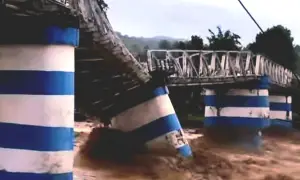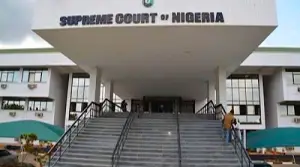The Minister for Water Resources and Sanitation, Joseph Utsev, has firmly denied allegations that water releases from Kainji and Jebba Dams caused the devastating flooding and fatalities in Mokwa, Niger State.
Speaking at a press conference in Abuja on Tuesday, Utsev attributed the disaster to residents' failure to heed flood warnings rather than dam operations. He emphasized, "I like to emphasize that the flood was not caused by water releases from either the Kainji or Jebba dams and that both dams are intact and safe."
The Minister extended condolences to Niger State's government and citizens, particularly those in Mokwa communities who suffered losses, deaths, and displacement due to the natural disaster.
Root Causes of the Flooding
According to Utsev, the flooding primarily resulted from extreme weather conditions linked to climate change, which overwhelmed local drainage systems. He noted that unregulated construction had blocked an ephemeral tributary of River Dingi, a seasonal waterway that flows into the River Niger.
"The absence of efficient alternative pathways to redirect the excess water further worsened the flood's impact on the communities," the Minister explained.
Utsev commended the Niger State Government, local authorities, and first responders for their immediate efforts to provide relief and support to victims.
Early Warnings Ignored
The Minister revealed that the Nigeria Hydrological Services Agency (NIHSA) had predicted flooding in 19 local government areas of Niger State, including Mokwa LGA, in the 2025 Annual Flood Outlook (AFO) published on April 10, 2025.
The AFO report identified 1,249 communities in 176 local government areas across 33 states and the FCT as high flood risk areas. Additionally, 2,187 communities in 293 LGAs across 31 states and the FCT were classified as moderate flood risk areas.
Call for Preventive Measures
Utsev urged state and local governments to act on early warnings by implementing several key measures:
Strengthening drainage infrastructure
Relocating vulnerable communities from flood plains
Conducting sustained public awareness campaigns
Enforcing land-use regulations to prevent encroachment into flood-prone areas
The Minister listed 31 states and the FCT as high flood risk areas for 2025, including Abia, Adamawa, Akwa Ibom, Anambra, Bauchi, Bayelsa, Benue, Borno, Cross River, Delta, Ebonyi, Edo, Gombe, Imo, Jigawa, Kebbi, Kogi, Kwara, Lagos, Nasarawa, Niger, Ogun, Ondo, Osun, Oyo, Rivers, Sokoto, Taraba, Yobe, and Zamfara.













